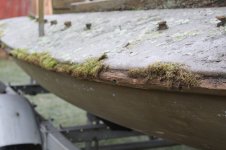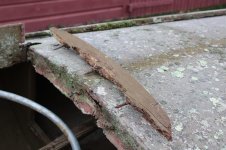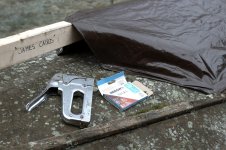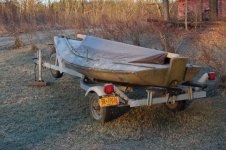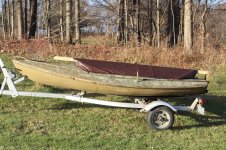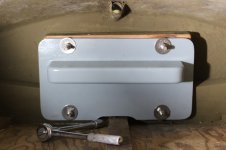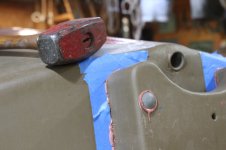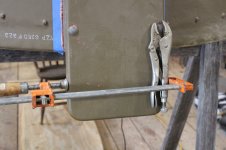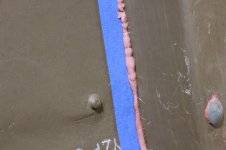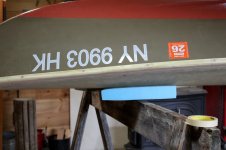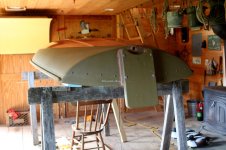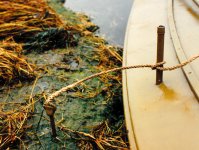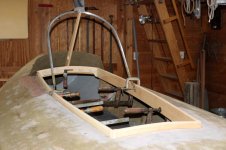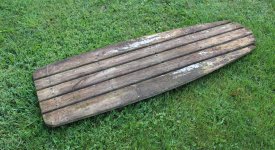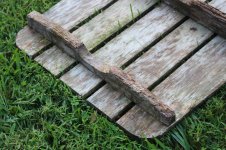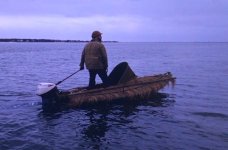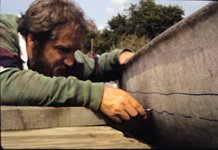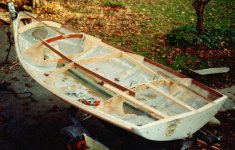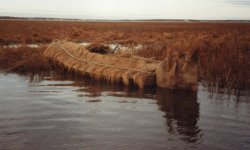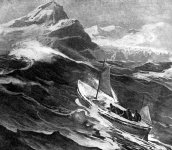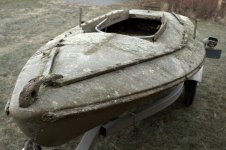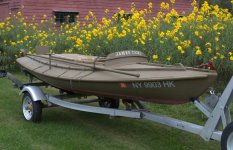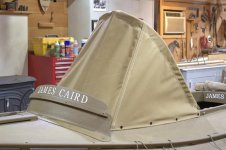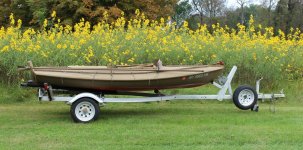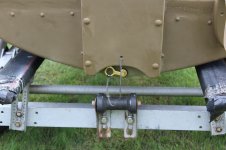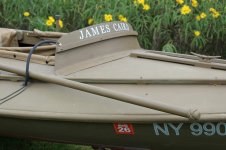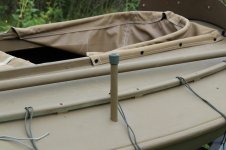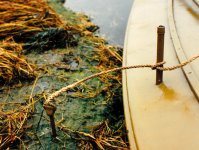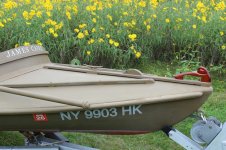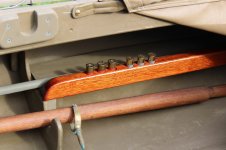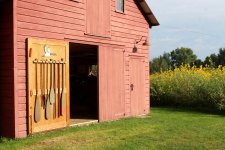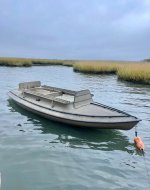Steve Sanford
Well-known member
Good morning, All~
I do not recall if I began this tale in earlier posts. I know I have included some snippets in the occasional Work Bench post. I built this vessel with a friend sometime in the early 90s - when we were both still on Long Island. He hunted it successfully for several seasons but then had to leave it behind for many years as his life took him hither and yon. He asked me to help him sell it a couple of years ago. I opted to buy it myself and put it back in shape. I will be bringing it to Tuckerton in a few weeks - but still lots to do!
I hauled it North in November 2020 - knowing it would not get my attentions for awhile....
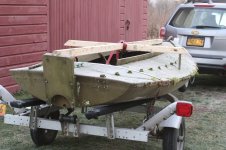
We had cut the hull down from a Beetle Swan - a small sailboat. I do not know what year our vessel was - but have recently learned that the Beetle Swan was among the very first mass-produced fibreglass boats. Sweet lines - and perfect for gunning. Although she lacks the true Barnegat's spoon bow - she is otherwise very similar below the waterline.
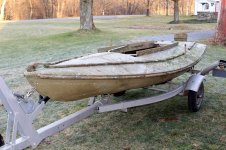
She is beamy and seakindly and enjoys very shoal draft. She is semi-planing - so rows and poles very nicely.

We decked her over and put a dodger up forward.
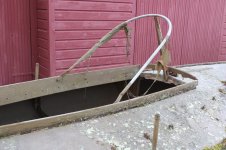
Once the storage tarp wore out, rot had its way with the wooden parts for a quarter century. My friend stored it in his Mom's back yard - so could not keep an eye on it.

This was one of the earliest motor boards I built. There is just a bit of rot on one lower corner of the treated SYP.
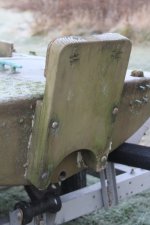
But, I used plywood for a clamp pad back then - and galvanized carriage bolts.
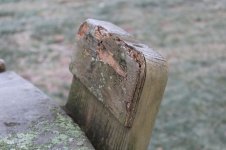
The oarlock stanchions are galvanized steel pipe - 1/2-inch I. D. They are still sound - but will be rehabbed and reinstalled.
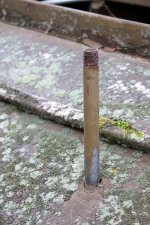
Some of the tougher jobs are from the interior rot. The slot in the knee holds the blade of an oar.
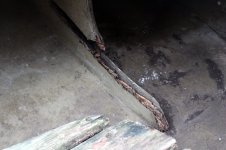
Only one of the 4 plywood knees survived the fungus and bacteria. The U-shape cutout holds the loom of an oar; the flat spot was for a shelf - which never did get built.

More to come.....
SJS
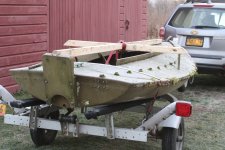
I do not recall if I began this tale in earlier posts. I know I have included some snippets in the occasional Work Bench post. I built this vessel with a friend sometime in the early 90s - when we were both still on Long Island. He hunted it successfully for several seasons but then had to leave it behind for many years as his life took him hither and yon. He asked me to help him sell it a couple of years ago. I opted to buy it myself and put it back in shape. I will be bringing it to Tuckerton in a few weeks - but still lots to do!
I hauled it North in November 2020 - knowing it would not get my attentions for awhile....

We had cut the hull down from a Beetle Swan - a small sailboat. I do not know what year our vessel was - but have recently learned that the Beetle Swan was among the very first mass-produced fibreglass boats. Sweet lines - and perfect for gunning. Although she lacks the true Barnegat's spoon bow - she is otherwise very similar below the waterline.

She is beamy and seakindly and enjoys very shoal draft. She is semi-planing - so rows and poles very nicely.

We decked her over and put a dodger up forward.

Once the storage tarp wore out, rot had its way with the wooden parts for a quarter century. My friend stored it in his Mom's back yard - so could not keep an eye on it.

This was one of the earliest motor boards I built. There is just a bit of rot on one lower corner of the treated SYP.

But, I used plywood for a clamp pad back then - and galvanized carriage bolts.

The oarlock stanchions are galvanized steel pipe - 1/2-inch I. D. They are still sound - but will be rehabbed and reinstalled.

Some of the tougher jobs are from the interior rot. The slot in the knee holds the blade of an oar.

Only one of the 4 plywood knees survived the fungus and bacteria. The U-shape cutout holds the loom of an oar; the flat spot was for a shelf - which never did get built.

More to come.....
SJS

Last edited:


